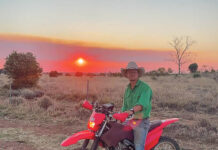WOOSTER, Ohio – As Ohio hunters browse the woods this year to make the most of deer-hunting season, animal disease authorities in the state are aiming at a different target hidden somewhere in the swift quadrupeds’ brains.
Chronic wasting disease, a fatal neurological condition that affects deer and elks, has not yet been found in Ohio.
However, its recent appearance in the Midwest has prompted state authorities to test and monitor Ohio’s deer herd this fall for any evidence of the disease.
Following deer gun season, the Ohio Department of Agriculture’s Animal Disease Diagnostics Laboratory has begun analyzing brain tissue from a statistical sample of 500 white-tailed deer killed by Ohio hunters in 26 counties - most of them in the southeastern corner of the state, where the largest number of deer are hunted.
Only matter of time. “It’s probably a matter of time before we find chronic wasting disease in Ohio,” said Srinand Sreevatsan, a scientist with the Ohio Agricultural Research and Development Center in Wooster.
“However, it’s unlikely that the disease will be found this hunting season because the animals being killed are very young, and CWD takes at least 18 months to develop.”
In his lab at OARDC’s Food Animal Health Research Program, Sreevatsan is developing a test to accurately diagnose transmissible spongiform encephalopathies, of which chronic wasting disease is an example.
Other encephalopathies include bovine spongiform encephalopathy (BSE, or mad cow disease) in cattle, scrapie in sheep and goats, and Creutzfeldt-Jakob Disease in humans.
Like all other transmissible spongiform encephalopathies, chronic wasting disease is characterized by the presence of tiny sponge-like holes in the brain of affected animals.
The agent responsible for TSEs is generally believed to be a prion, the abnormal form of a normal host protein that accumulates in the victim’s brain.
As a result of neurological damage, infected deer and elks experience excessive salivation, trouble swallowing, difficulty judging distance, lack of coordination and drooping ears. The disease is always fatal.
Hard to hunt. Thus far, an effective blood or tissue test that can be performed on live deer to identify prions hasn’t been developed, which makes the hunt for CWD even harder.
Also, many questions still remain as to how the disease is transmitted.
“Transmission seems to be more horizontal than vertical,” Sreevatsan explained.
“That means the disease is spread by direct or indirect contact between animals: through saliva, urine, blood and other bodily fluids. There isn’t much evidence to believe that the disease is passed on during birth.”
Chronic wasting disease was first detected in 1967 in northeast Colorado. As of December 2002, it has been diagnosed in wild or captive deer and elks in 11 states and the Canadian provinces of Alberta and Saskatchewan.
Although proof is sketchy, wildlife experts suspect that deer and elk farming, along with the interstate shipment of animals to and from these farms, may be responsible for the spread of chronic wasting disease.
For over 30 years, the disease was restricted to areas west of the Mississippi River. But this year, it turned up in Wisconsin’s wild deer herd, prompting officials there to begin an effort to kill 25,000 animals in the southwestern part of that state.
And last month, the threat moved even closer to Ohio, when a deer with the disease was killed in northern Illinois.
Moving east. Wildlife officials are especially concerned about the disease moving east because deer are more concentrated in the Midwest.
In the West, the disease hits only a small percentage of deer because the animals are scattered.
Ohio has a wild herd of 575,000 white-tailed deer. Another 6,000-plus animals live in captivity on the state’s 515 deer farms, most of which are located in Holmes, Wayne, Stark, Tuscarawas and Geauga counties.
That’s why the state department of agriculture will also test deer killed in these areas.
There are elk farms in Ohio, too, but no state records are kept on them.
“Most cases of CWD have been found among captive animals,” Sreevatsan pointed out.
“In farms, deer and elks live longer and have more time to develop the disease. They are also more exposed to infected individuals and their bodily fluids.
“Unlike mad cow disease, CWD has not been found to infect humans. However, the World Health Organization recommends that people should not eat any part of a deer or elk showing symptoms of the disease, and should not feed it to other animals.
“There’s no reason to panic,” Sreevatsan said. “There’s no evidence that chronic wasting disease will cross the species barrier. It’s possible, but highly improbable.”
Business impact. However, the scare could have a major impact in the deer-hunting business.
Reports say that as many as one-third of Wisconsin’s hunters may decide not to shoot deer this year because of fear of the disease.
Besides, state officials are concerned because a decline in hunting numbers would result in more deadly deer-vehicle accidents.
But chronic wasting disease doesn’t seem to be scaring Ohio hunters. This year, they are expected to challenge the 1995 record harvest of 179,543 animals. In 2001, Ohio hunters killed 165,124 deer - a $230-million industry.
Precautions. Public health and wildlife officials advise hunters to take the following precautions when pursuing or handling deer and elks that may have been exposed to chronic wasting disease.
* Do not shoot, handle or consume any animal that is acting abnormally or appears to be sick. If you see sick or emaciated deer, notify a regional office of the Ohio Division of Wildlife by calling 1-800-WILDLIFE.
* Wear latex or rubber gloves when field-dressing your deer or elk.
* Bone out the meat from your animal. Don’t saw through bone, and avoid cutting through the brain or spinal cord.
* Minimize the handling of brain and spinal tissues.
* Wash hands and instruments thoroughly after field-dressing is completed.
* Avoid consuming brain, spinal cord, eyes, spleen, tonsils and lymph nodes of harvested animals.
Normal field-dressing, coupled with boning out a carcass, will remove most, if not all, of these body parts.
* Avoid consuming the meat from any animal that tests positive for the disease.
* If you have your deer or elks commercially processed, request that your animal be processed individually, without meat from other animals being added to meat from your animal.
The state department of agriculture will also be conducting individual tests for interested hunters at its Reynoldsburg lab. For details, call 614-728-6220.
For news and additional information on the disease, log on to www.cwd-info.org.









